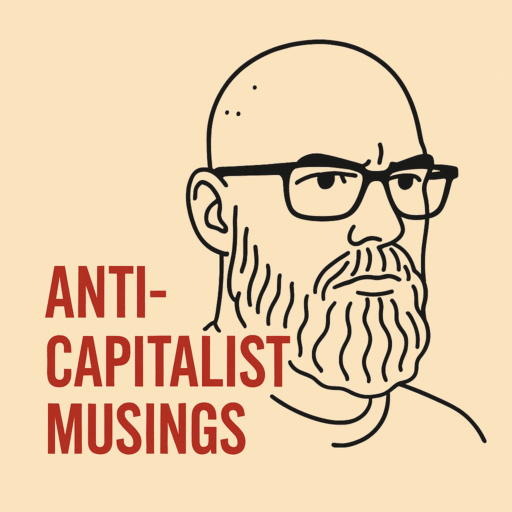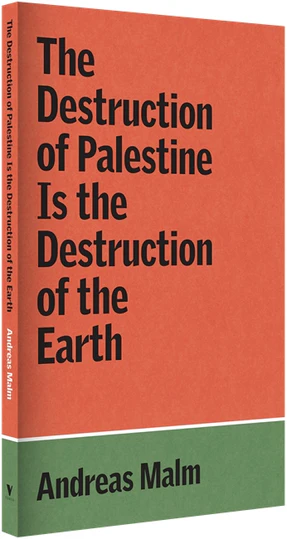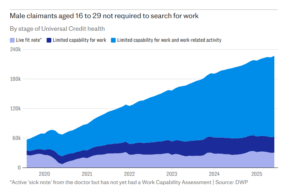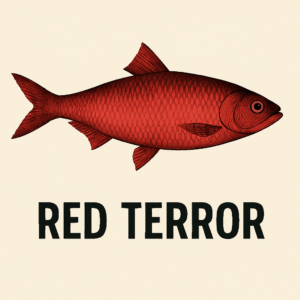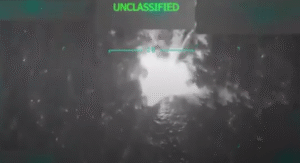The pamphlet is a weapon, or at least it should be. Its job isn’t to adjudicate or explain or win prizes. It exists to intervene. With clarity, and with intent. Andreas Malm’s The Destruction of Palestine Is the Destruction of the Earth is a pamphlet in the truest sense: not a balanced account but a moral and political explosion, written in the half-light of genocide and the long tail of the fossil economy. It’s easy to imagine someone saying he’s gone too far. But the better question, given the moment, is whether he’s gone far enough.
The text began as a lecture delivered at the American University of Beirut, six months into Israel’s ongoing annihilation of Gaza. Its central thesis is disarmingly direct: the violence unfolding in Palestine and the violence disfiguring the planet are not parallel crises, but mutually constitutive. To say that Gaza is being destroyed, Malm argues, is also to say that the Earth is being destroyed, and not metaphorically. Both are products of a system, fossil capitalism, that recognises no limits: not legal, not moral, not planetary.
He opens with numbers that are already dated1: 38,794 Palestinians killed, of whom 16,172 were children. This is July 2024 data, bodies that had reached hospitals, not those still entombed beneath the rubble. The occupation has razed homes, schools, mosques, farms, churches, refugee shelters, entire districts. Hospitals have been systematically targeted, and those waiting for flour have been massacred. Each line of condemnation, he writes, has been met by Israel with a doubling-down. A refusal of restraint that becomes a statement of mastery. “There are no limits to what the state of Israel can get away with.” It’s a line Malm repeats, like an incantation or diagnosis. He is not just describing a war; he is describing a structure.
If the pamphlet stopped there, it would already be worthwhile. But Malm’s aim is broader: to draw Gaza into the logic of global extraction, to refuse the soft partitioning of climate from geopolitics. As Gaza burns, so do the Amazon and the Sahel. As Israeli bombs fall on Deir al-Balah, so do floodwaters engulf Derna. The death is not the same, but the structures that make it possible are. Malm coins a term (paupericide) to describe the relentless, indifferent, and predictable killing of the poor by fossil capital. There may be no gunner, no airstrike, but the death is systemic and accelerating. “If you’re doing something that hurts somebody, and you know it, you’re doing it on purpose,” he writes, quoting the Derek Chauvin trial. The line holds.
This is one of the pamphlet’s real strengths: it restores intentionality to climate violence without overstating design. No one set out to drown Bangladesh or turn Derna into a morgue. But the knowledge is now universal. The lethal consequences of fossil extraction are no longer speculative; they are real, ongoing, and distributed along the faultlines of race, class and geography. In this, the fossil economy becomes indistinguishable from the settler-colonial one: indifferent to suffering, structurally dependent on the removal of life that interrupts accumulation.
The pamphlet’s historical chapter is less familiar, though no less compelling. Here, Malm returns to 1840. A year he has long considered decisive. When Britain deployed steam-powered warships to destroy the forces of Muhammad Ali and secure the Levant for Ottoman (and British) control. The bombardment of Akka, Malm reminds us, was the first demonstration of fossil-fuelled imperial war. It was also, not coincidentally, the moment when British officials. That of Palmerston, Shaftesbury, and Churchill began proposing Palestine as a territory for Jewish colonisation. Malm draws a straight line: fossil empire enabled the military domination of the Middle East, and in its wake, laid the ideological and logistical foundations for Zionism. “Steamers make the wind always fair,” boasted Napier, the British admiral. Fossil power conquered both the sea and the imagination.
To be clear: Malm is not arguing that Zionism was cooked up in 1840 by Palmerston in the Foreign Office. Rather, he shows that the idea of Palestine as a settler colony under imperial protection. A Jewish bulwark against Arab nationalism and an extension of British commerce. Was first articulated in the same breath as the destruction of Arab sovereignty and the imposition of free trade. Zionism, in this view, begins not with Herzl but with coal.
This is not a conventional Marxist genealogy, though it is absolutely within the tradition. There are moments when the causal chain feels a little tight. The leap from steamboats to Akka to ecological collapse needs more scaffolding than Malm offers. But that is the risk one runs in writing a pamphlet, not a thesis. Malm knows this. He says up front that the work is incomplete, an opening gesture rather than a finished structure. The point is not to close debate but to reframe it: to ask how the destruction of Palestine fits within a broader pattern of imperial climate violence, and what it means to resist that destruction in our time.
There are passages in The Destruction of Palestine Is the Destruction of the Earth that will make some on the left uncomfortable. That’s partly the point. Midway through, after pages of grief and rubble and scorched infrastructure, Malm recounts the morning of 7 October not with ambivalence, but with astonishment and joy. “Those of us who have lived our lives with and through the question of Palestine could not react in any other way,” he writes, recalling the moment Palestinian fighters overran the Erez checkpoint “this labyrinth of concrete towers and pens and surveillance systems.” It was a rupture, not a crime. The wall cracked. The occupation shuddered. And for a moment, the Palestinians. So often buried, displaced, disappeared. Broke the surface.
It’s a tone few mainstream writers would risk. But this is no mainstream text. Malm is writing as a comrade, not an analyst, and his argument is unflinching: no colonised people has ever been expected to remain peaceful forever. The destruction of Gaza is not the consequence of resistance. It is its condition. Resistance is not what caused the genocide. It is what remains possible within it.
The western liberal consensus, with its pieties about proportionality and its sudden rediscovery of international law, has no framework to accommodate the reality of Palestinian revolt. Malm does. His defence of resistance is not sentimental. It’s not even strategic. It’s existential. It proceeds from the knowledge that to be Palestinian in Gaza is already to live under a sentence of annihilation. That what passes for peace is a holding pen, that the checkpoints are not metaphors, and that the death count only ever moves in one direction. In such conditions, resistance is not a choice. It is a necessity, and a right.
This is the most important polemic of the pamphlet: that revolution is not terrorism, and that resistance, even when it takes armed form, should not be reduced to pathology. To cross the wire at Erez, to seize the police station in Sderot, to fight in a world where diplomacy has been replaced by starvation and airstrikes. These are not acts of madness. They are acts of agency. And to understand them is not to glorify death, but to refuse a politics that sanctifies only the coloniser’s life.
What Malm gets right (and what much of the left still hesitates to say aloud) is that we are past the point where resistance can be bracketed off from solidarity. The same states that flood the skies above Gaza with drones and phosphorus are the ones issuing new drilling licences in the Gulf of Mexico, criminalising protest in London, and arming fascist border patrols in the Mediterranean. You cannot support climate justice and oppose Palestinian liberation. You cannot say “no to genocide” and recoil from the people who are fighting to survive it.
To support the resistance is not to endorse every tactic. It is to recognise the legitimacy of the struggle, and to place yourself within it. Malm’s pamphlet refuses moral quarantine. It insists that solidarity is not a slogan, but a stance. In a world where genocide is live-streamed, and mass death is rationalised as “self-defence,” to remain neutral is to side with the occupier.
“Every limit has been broken,” Malm writes. The only question left is whether there remains the will to fight back. Not only in Gaza, but in London, Paris, New York, where the logic of empire still wears liberal clothes. The resistance is not elsewhere. It’s here too.
If there is a limitation to the work (and there is) it lies not in the rage, which is justified, but in the occasional pull toward abstraction. “There are no limits” is a powerful refrain, but it can drift toward fatalism. The problem is not that Israel or the US or Exxon are literally omnipotent, but that they act as if they were, with legal and political cover. That gap. Between the fantasy of impunity and the reality of resistance, is where politics lives. Malm knows this too. His earlier books are full of that insight. But here, the weight of Gaza’s suffering sometimes overwhelms the dialectic. The pamphlet veers, for stretches, into a kind of prophetic register: prophetic in the best sense, but still.
Yet this is also what makes the pamphlet necessary. It is not an academic study. It is a scream. And sometimes a scream is the only honest response. There are moments of breathtaking clarity: the description of parents burying their children, the evocation of Akka’s destruction mirrored in Jabaliya’s, the linking of the Amazon’s potential dieback to a Palestinian logic of erasure. These are not metaphors; they are continuities. The Earth is being cleared, not just for profit, but for power.
What emerges is not a call to environmental moralism but to resistance. Malm does not ask us to green our habits or mourn the dying world. He asks us to recognise the structures that bind the settler colony to the extractive state, the drone strike to the pipeline, and to see that struggle in one place must mean struggle in the other. Palestine is not a digression from the climate movement. It is its centre.
The pamphlet ends without comfort. It offers no revolutionary optimism. But it insists on connection. The task of the left, Malm implies, is not to interpret Gaza or the climate crisis, but to fight both. Not with slogans, but with solidarity, material action, and a refusal to let one more home, one more forest, one more child be turned into dust.
The resistance is not elsewhere. It’s here too
Malm has done this before. When How to Blow Up a Pipeline was published, he spoke to Anti*Capitalist Resistance in what I think is still our most watched video on YouTube. That book was a challenge to the climate movement’s fixation on spectacle over sabotage, asking not how we feel about the crisis, but what we’re prepared to do about it. The same ethic animates this pamphlet. He doesn’t write to persuade. He writes to provoke. He forces the question: if there is no limit to what the state of Israel can get away with, then what limit are we, the international left, willing to impose? The Destruction of Palestine Is the Destruction of the Earth is not a document of despair. It’s a confrontation, and an invitation to act.
There are few writers who could make this case with the same force. Malm writes as a comrade, not a commentator. And The Destruction of Palestine Is the Destruction of the Earth is a comrade’s pamphlet: raw, urgent, imperfect, necessary. It should be read, shared, argued with. Most of all, it should be used.
FOONTNOTES
- Here are the latest casualty figures from the Palestinian Ministry of Health in Gaza as of July 29, 2025:
Confirmed killed: at least 60,034 people, including at least 17,400 children
Injured: at least 145,870 people ↩︎
